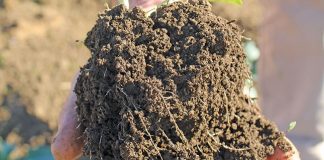Two years ago, scientific models showed that we were using 1,5 times the Earth’s resources per year, which was unsustainable. That number has since grown to 1,6.
“Nearly half the global population, about 4,5 billion people, won’t meet their nutritional needs by 2040 if we don’t use innovation in food production,” says André Westerveld, regional director of Elanco South Africa, part of Elanco Animal Health, which develops products to improve animal health and production.
Elanco recently launched the Enough movement, which is committed to building a food-secure world by 2050.
Milk is just one example of food production that is already under constraint.
Today, per capita milk production cannot meet the basic nutritional needs of two 240ml glasses a day.
Currently one cow produces on average 7,5l/day, but in some areas, it is more than 26l/day, says Westerveld.
Researchers predict that we can have enough milk if every year, every cow increases its daily production by just 140ml, approximately half a glass.
Now that milk production quotas have been removed in the EU, many European dairy farmers are looking to expand production by turning to automated milking (AM) systems.
However, the increase in AM is associated with a decrease in grazing and there is a major concern that the established economic benefits of grazing will be lost if the use of AM systems is not integrated with the grazing of dairy cows.
This is the subject of AUTOGRASSMILK, which is part of the Enough movement. The project aims to develop and implement improved sustainable farming systems that integrate the grazing of dairy cows with AM.
In the process, a variety of cow movement systems are being developed and tested. One device identifies where grass density is highest and a gate selectively allows tagged cows into the milking areas or new lands.
Proper tools and investment
“We need to learn from and implement these solutions across the globe,” says Westerveld. “A lack of access to innovation, science, and productivity-enhancing methods has prevented regions such as sub-Saharan Africa and South Asia from achieving their agricultural output potential.
With proper tools and the investment needed to increase production, agricultural output in Africa could increase from US$280 billion [R4 trillion] per year in 2010 to US$880 billion [R12,7 trillion] in 2030.”
Contact Elanco SA at 012 657 6200 or [email protected]. Visit sensibletable.com.













